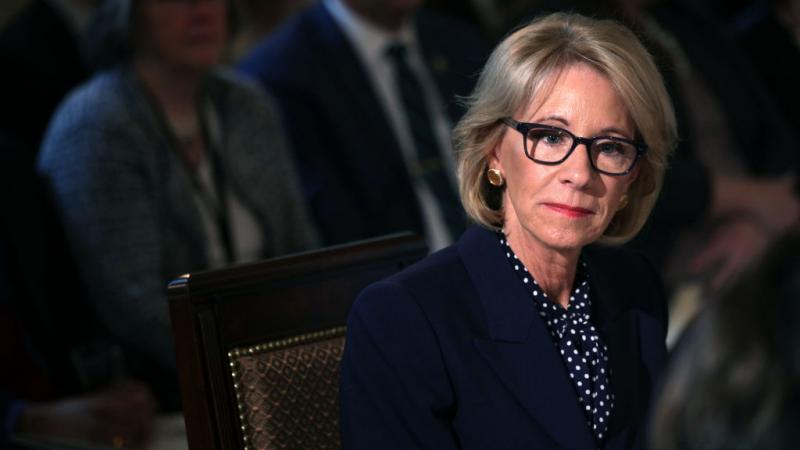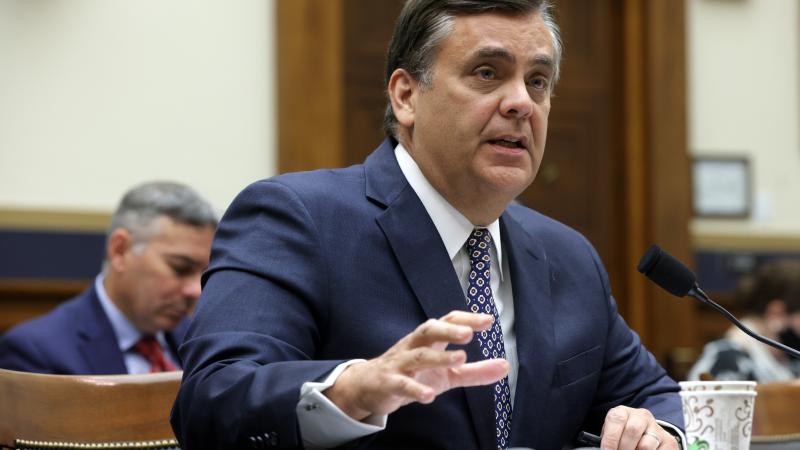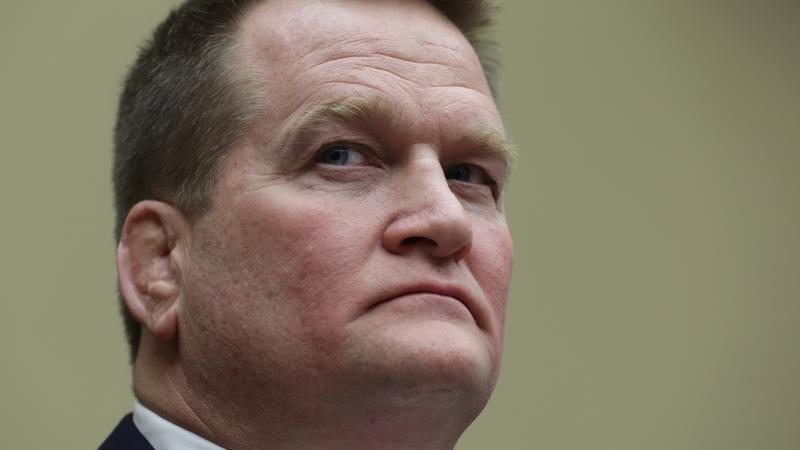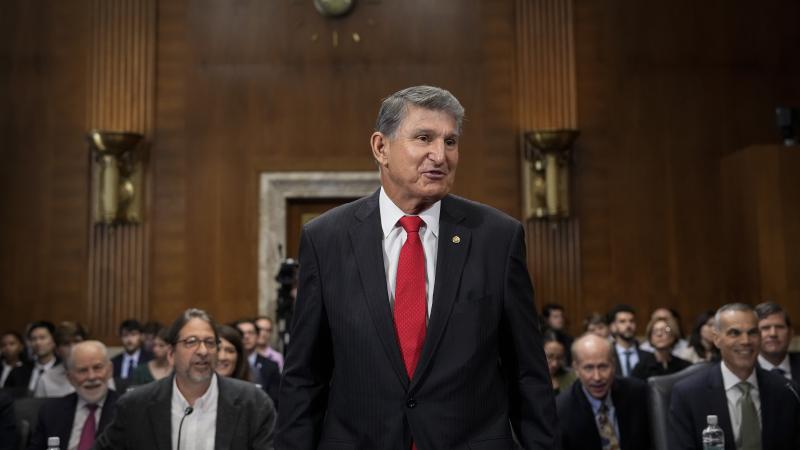Biden pushes plan to help 'underserved students' most devastated by school closures he supported
Fresh evidence shows pandemic-related school closures championed by Democrats and teachers' unions most hurt low-income, minority and other vulnerable students already behind.
After the Education Department on Monday released data showing U.S. students suffered historic learning loss due to school closures during the COVID-19 pandemic, the Biden administration unveiled a new plan to address the nationwide decline in math and reading skills — but the updated "Learning Acceleration Guide" largely follows the administration's diversity, equity, and inclusion agenda.
The plan calls for spending billions of dollars on programs that advance "equity" and "culturally and linguistically relevant" learning to "address learning loss and accelerate recovery," particularly for "underserved students" most in need of help — the very kids hurt most by school closures pushed by President Biden and like-minded allies.
"While COVID-19 has touched all students, it has deepened pre-existing inequities facing students of color, students from low-income backgrounds, multilingual learners, students with disabilities, LGBTQI+ students, students experiencing homelessness, and other underserved students," the guide states.
The plan outlines six strategies for schools to use:
- "Provide students with tailored learning acceleration opportunities."
- "Implement high-quality and effective tutoring."
- "Use high-quality diagnostic and formative assessments to inform and personalize
instruction." - "Integrate and prioritize the social, emotional, and academic needs of all students."
- "Support the successful transitions of students from preschool to elementary school, elementary school to middle school, middle school to high school, and high school to postsecondary education and the workforce."
- "Use high-quality out-of-school time learning experiences to support students'
social, emotional, and academic needs."
The strategies stress the importance of culturally and linguistically "relevant" and "responsive" learning that fosters an "equitable environment" and "positive learning experiences."
The administration's focus on low-income and minority students is striking, as such kids were the ones who, according to several studies, were most set back by school closures backed by Biden.
The Education Department's National Assessment of Educational Progress, known as the nation's report card, which tests a broad sampling of fourth and eighth graders, showed the "largest score declines" since the federal government began tracking these metrics in 1990.
Math and reading scores took major hits nationwide, especially among the country's most vulnerable students. Black and Hispanic students, for example, experienced steeper declines than white and Asian peers in fourth-grade math after already starting out behind.
Between 2019, the results of the last National Assessment of Educational Progress, and 2022, the number of black students in public schools performing "below basic" in fourth-grade math on the national assessment spiked from 35% to 46%. The share of Hispanics rose from 27% to 37%. The share of whites scoring at the lowest performance level only increased from 12% to 15%.
Many categories saw significant declines in academic performance across the board, regardless of race. But overall, performance gaps between white students and their black and Hispanic peers widened since 2019.
More broadly, fourth-graders who were in the bottom 25th percentile in both math and reading lost more ground compared with students at the top of their class, leaving these low-performing students further behind.
Students with less resources at home especially struggled. Only half of fourth graders who were low-performing in math said they had access to a computer at all times during the 2020-2021 school year, compared with 80% of high-performing students, according to a survey included in the assessment. Similarly, 70% of low performers said they had a quiet place to work at least some of the time, compared with 90% for high performers.
The new national figures coincided with California releasing state-specific data showing two out of three California students didn't meet state math standards and more than half didn't meet English standards on state assessments taken in the spring, further highlighting the toll that school closures during the pandemic took on student learning.
The test results were more devastating for black, Hispanic, low-income and other "underserved students," to use the Biden administration's term. Indeed, 84% of black students and 79% of Hispanic and low-income students didn't meet state math standards this year.
Several other data sets over the last two years have found similar results showing low-income and minority students have been hit especially hard by school closures.
As early as July 2021, McKinsey & Co., a leading consulting firm, released a report that detailed how children in low-income schools ended the school year on average seven months behind in math and six months behind in reading.
In majority black schools, students ended the year six months behind in both math and reading on average, according to the report. Their peers in high-income and majority white schools, meanwhile, fared better, although they still lost several months of learning due to the shutdowns.
McKinsey forecast that "pandemic-related unfinished learning" could reduce lifetime earnings for K–12 students and create a potential annual GDP loss of hundreds of billions of dollars.
The new Biden plan is silent on the role that leading Democrats, teachers' unions and the president himself played in prolonging school closures.
At the height of the debate over school closures in July 2020, for example, the Democratic National Committee released an ad lambasting then-President Trump for being "desperate to reopen schools," accusing him of "ignoring how the virus spreads" and "risking teachers' and parents' lives" by "going against the advice of experts."
The ad then showed a school hallway with an ominous voice asking, "Do you trust him to do what's best for our children?"
In February 2021, after Biden was in office, the White House was aware of efforts by the American Federation of Teachers (AFT) to lobby the Centers for Disease Control and Prevention to adopt advisory language delaying school openings. The lobbying effort worked, and Biden White House officials appeared to facilitate rather than resist the ATF's campaign, according to emails obtained by a watchdog group last spring.
Critics accused the Biden administration of "dragging its feet" on fully reopening schools, which happened months after Biden promised it would in his first 100 days.
However, the administration has consistently blamed Trump for school closures, most recently this week when White House Press Secretary Karine Jean-Pierre was asked if the Biden administration has a plan to address student learning loss from the pandemic.
"It was a top priority for [Biden] to safely reopen schools, and he did that," Jean-Pierre told reporters at a press briefing. "The COVID response was incredibly mismanaged by the former administration."
In addition to a nationwide epidemic of severe learning loss, the administration appears to have another, related problem: Its proposed solution, the updated Learning Acceleration Guide, isn't being implemented.
Beyond general notions of promoting equity and inclusion, the guide more concretely calls for states, districts, and schools to use funds provided by the American Rescue Plan (ARP), a Democrat-backed $1.9 trillion economic stimulus bill, to implement such programs, listing several examples of how some school districts are already doing so.
The Oregon Department of Education, to cite one example, used ARP funds to ensure all local education agencies have "an equity-centered plan to invest in drop-out prevention" and other programs.
In Rhode Island, meanwhile, the state's Learning, Equity, and Accelerated Pathways District Support Program Task Force is using tutoring to "meet the diverse needs of students."
The ARP provided $130 billion to schools, including $122 billion in Elementary and Secondary School Emergency Relief (ESSER) funding to K-12 schools to reopen and address the impact of the pandemic, according to the Education Department.
However, schools only spent 15% of the ESSER funding during the 2021-2022 school year, according to an analysis from the Washington Post, Georgetown University and Edunomics, an education finance group.
About half of the 211 districts examined that are furthest behind in math and English spent 5% or less of their money.
The money wasn't spent for a variety of reasons, according to the analysis, including delayed access to funds, a nationwide teacher shortage, and a desire to make the money last by stretching it out as long as possible until it expires in September 2024.
















